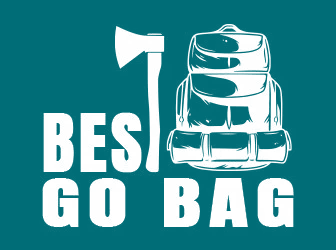Imagine a media news outlet with multiple reporters immediately on the scene for every emergency.
Now, that’s not very realistic. News gatherers can’t be everywhere at the same time… or can they?
The answer: social media. It seems to happen almost every time there is a crisis situation these days. Within seconds, people are on the scene posting images and comments about what is going on.
From politics, to hurricane damage, to stranded vehicles from blizzards… Twitter and Facebook are all over it.
Phones – the New TV News Cameras
It seems just about everybody these days carry a cell phone on their person. In fact, 94 percent of Americans to be exact.
And while 911 calls inform law enforcement, social media postings result in newspaper, television, radio and Internet reporters arriving on the scene in minutes.
This goes for text messaging too. A typical text is read within three minutes 90 percent of the time. This speedy read time can allow for faster travel of information.
The more media coverage a situation can get helps more people realize what is going on. And which areas to avoid. They also allow law enforcement officers to gain more knowledge about an unfolding situation.
Built-in Emergency SOS Tools
One thing I hope you never have to use your cellphone for is getting emergency help. But if you do suddenly need it for that purpose, there are built-in emergency tools on your phone that can help you in a crisis.
I thought I would share some of those tools with you, in case you haven’t heard about them. Then I’ll provide you with some practical tips to make sure your cellphone is ready to use when you need it most.
An iPhone has built-in emergency SOS tools you can use in an emergency.
But if you don’t know how to use them, they are about as much help as a disabled smoke alarm in your home.
Emergency Contacts on Alert
In most versions of the iPhone, you can start your SOS by pressing the power button five times and dragging the red slider over to start your 911 call.
Once your call is completed, your phone will send a text message to your emergency contacts.
It will give them your location and notify them when your location changes.
(You can choose to cancel the emergency contacts communication if you want to.)
5 Emergency Tips From FEMA
It’s easy to see that cell phones have become an invaluable resource in our day to day lives. But you really come to realize their importance in the event of a disaster. You can see weather updates, get important alerts, and even phone for help if needed.
Here’s information from the Federal Emergency Management Agency about how to use your cellphone as an emergency resource:
- Store useful phone numbers. Make sure the numbers for your emergency contacts are up to date. Store the contact information for your local police, fire departments and utility companies. That way, you’ll be able to quickly report any service or power outages following an emergency.
- Create a group for your emergency contacts. Some cellphones allow you to create contact groups. This makes it easy to send a single text to a group to let them know your status after an emergency. Many social networking sites allow you to create a group of contacts too.
- Stay up to date via Twitter without an account. Twitter is an important vehicle for info before, during and after a disaster. One of the common misconceptions is that people need an account to get updates. In fact, you can get updates from Twitter simply by utilizing your phone’s text messaging capability.
- Bookmark useful mobile sites. If your cellphone has Internet access, be mindful of mobile sites formatted to display info within a mobile browser. The National Weather Service, Centers for Disease Control and Prevention, and FEMA are mobile sites you can bookmark.
- Backup your battery. This may not be a tip for using your cellphone, but having an extra battery for your phone (or a solar charger) in your emergency kit is important. This will ensure you can use your device if the power stays out for an extended period of time.
Have Your Lifeline Ready
Lastly, and most importantly, remember to keep your cellphone as powered up as possible. Especially if you’re headed out the door and might not be able to power it again soon.
But as FEMA outlined above, it’s also important to have a backup plan for powering your phone in place. Just in case you ever find yourself in a pinch.
You never know what might happen. And having a phone on hand when you need to call for help can make the difference between life and death.
Just ask the residents of Texas and Florida after Hurricanes Harvey and Irma back in 2017.
People were desperately trying to call emergency responders for help, and the phone lines were absolutely jammed. Authorities actually told people to stop using social media and told them to just keep calling.
But how are you supposed to keep calling if your power is out and your cell phone is dying? You’d be stranded!
That’s why portable, backup power is downright essential in an emergency. Communication is critical to survival, and your phone isn’t any help to you if it’s dead.
Our top recommendation to keep on hand for this is the Patriot Power Cell.
This breakthrough backup power device fits in your pocket, and powers in the sun. So you’ll never have to worry about the internal battery running out.


